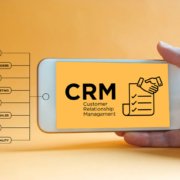Senior Living Sales: Mapping The Customer Journey After They Say Yes
Senior living sales and marketing departments spend a lot of time developing prospect personas and mapping out their journey. But what happens once a prospect becomes a bona fide customer? Their journey doesn’t end once they move in.
As a resident, they begin a new journey, one that can be happy, sad, or meh (depending on many factors). Senior living sales and marketing departments MUST pay attention. If you don’t, you could be losing out on a great referral source. (Happy residents talk up their experience and refer others.)
Take some time understanding the customer’s journey AFTER they say yes. Look for ways to build on what’s working. And address any issues, even if they fall outside senior living sales and marketing.
First, keep these things in mind:
- There’s a lot going on. There’s a move that has to be coordinated, downsizing that needs to happen, financial matters to figure out, and paperwork to sign—lots of paperwork with lots of legalese.
- It’s a significant change. The decision to move to a senior living residence is right up there with saying yes to a marriage proposal, choosing a college, and getting a new job. There’s stress and uncertainty. It’s a reminder that they are aging and need more help. They are giving up their home and familiar routines. Perhaps they’re afraid of losing personal control. Plus, they might be sad to leave their friends and community and become a stranger in their new environment.
- They may be moving in after a crisis. Some residents are facing challenging situations, such as the following:
- Severe health issue
- Loss of spouse or caregiver
- A decline in physical or mental health
- It’s exhausting. Going through the decision process, planning the move, and then doing the actual move-in can be physically and emotionally exhausting for both the resident and family.
Second, figure out how senior living sales and marketing can you create a customer journey that supports residents and their families?
You want to create a journey that provides an empathetic, positive experience. Here are a few ideas to get you started:
- Do your research! Talk with residents and families and learn from their move-in experience. Did you provide a move-in gift or welcome package? If yes, did they find it helpful? If not, what was lacking? Can the senior living sales and marketing teams work on a better welcome package?
- Look at your touchpoints and channels. What interactions do you have with residents and families during the move-in process? What are the methods by which these touchpoints happen: in-person, emails, phone conversations? Bottom line: the senior living sales rep shouldn’t disappear once the customer has signed. Remember, YOU are the person they know best. Greet them and their family the day they move in. Make a point of checking in on them over the next thirty days. Ditto with their family. If they bring up any issues, don’t say “Oh, I’ll look into that” and then forget. FOLLOW UP.
- Think about how the customer feels during each touchpoint. Go through each touchpoint and think about how the customer may feel. Are they scared? Emotional? Confused? Disappointed? What are ways for everyone to come together to address these things?
- How can you make that experience better? Look at opportunities to make the process easier. How can you reduce some of the stress and uncertainty? How can you make the process consistent and scalable? Are there best practices in your organization?
- Get ongoing feedback and commit to ongoing improvement! There’s always room for improvement. Build on what’s working and fix what’s broken.












Leave a Reply
Want to join the discussion?Feel free to contribute!